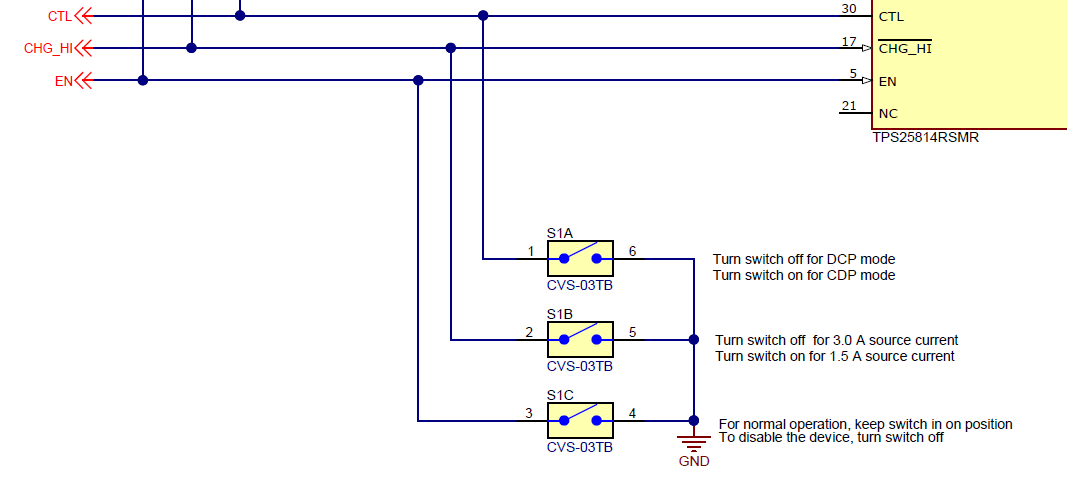SLVUC37 March 2021 TPS25814
3.5 Switches: CTL, CHG_HI, EN
There are three switches used to control the TPS25814, which are connected to the CTL, CHG_HI, and EN pins of the TPS25814. S1A is connected to the CTL pin and when disabled the TPS25814 is configured to BC1.2 DCP charging mode. When S1A is enabled, the TPS25814 is configured to BC1.2 CDP charging mode. S1B is connected to the CHG_HI pin and when disabled, the TPS25814 presents a 3.0 A source current capability on the CC pins via a Rd. When S1B is enabled, the TPS25814 presents a 1.5 A source current capability. Finally, S1C is connected to the EN pin of the TPS25814 and when disabled, the TPS25814 is enabled and put into normal operation. When S1C is enabled, the TPS25814 will be disabled and remain in the Type-C Error Recovery state.
 Figure 3-5 CTL, CHG_HI, and EN
Switches
Figure 3-5 CTL, CHG_HI, and EN
Switches